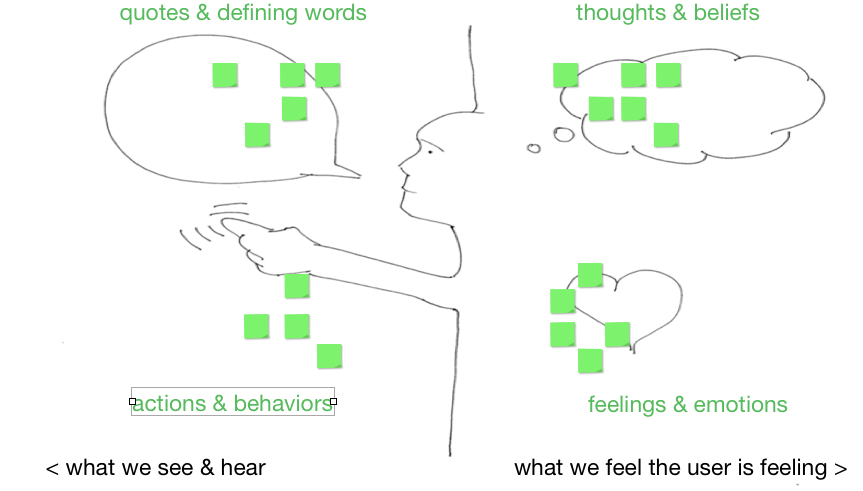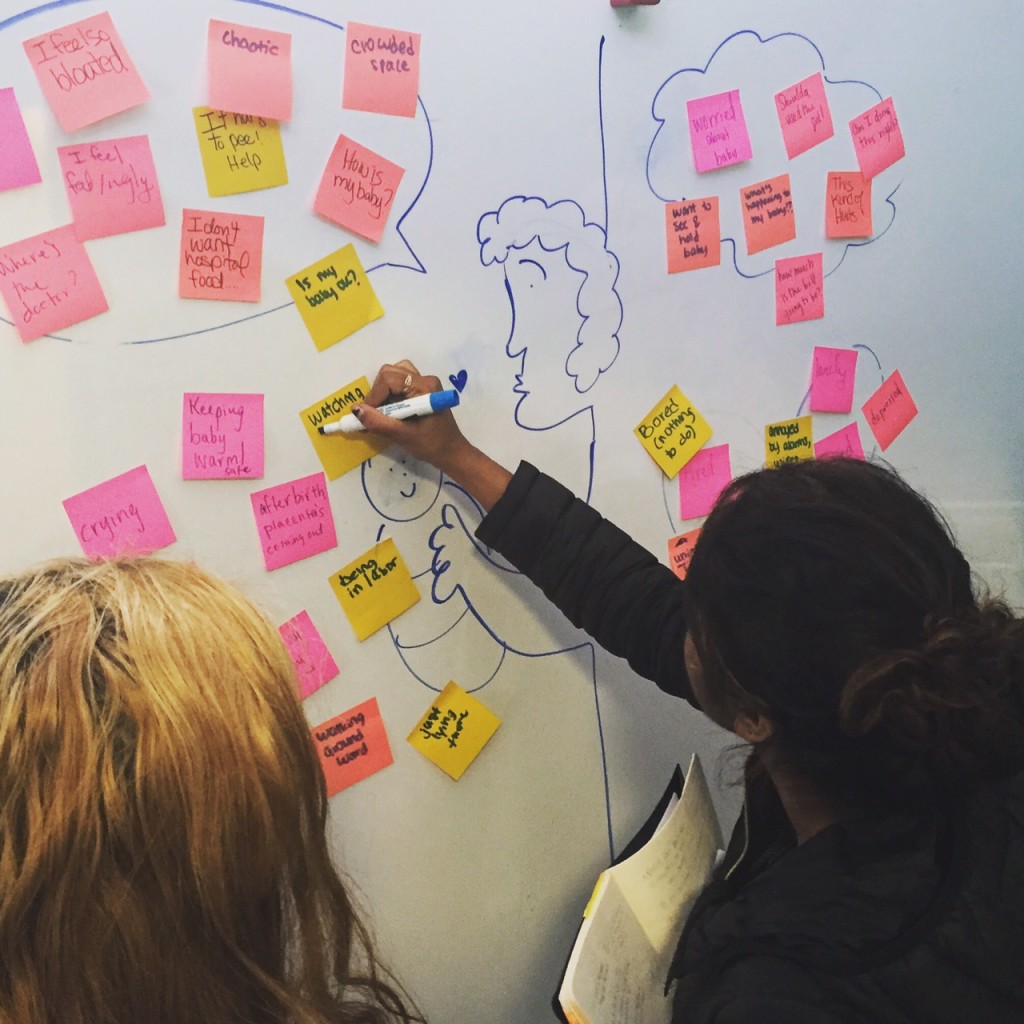Yesterday’s class was focused on the second phase of the design thinking process: synthesis/define. How the heck do we make sense of all the stuff we have seen and heard? What exactly are we “defining?”
The point of synthesis is to try and find patterns or exceptions that help you understand what might be needed in the space you are studying. Patterns usually start to emerge after several user interviews, or from observing similar work-arounds or behaviors with different individuals or groups. Yesterday we started sorting our ethnography work by drawing an empathy map for a meta-user:

Homework is to synthesize the empathy map information by writing down patterns and outliers, then create a “persona” or individual user they want to focus on (a great way to frame the context), and finally to write a minimum of three need statements or “points of view” based on their synthesis work. I actually did the assignment myself yesterday after class, picking Dr. Henry Lee as my user. The point of all of this is to try and get to a place where what we design really matters. I’ve learned in my career that often, it’s too easy to just make “stuff”. One of the more difficult parts of the process, (but the most fun part for me) is to figure out what needs to be made.


